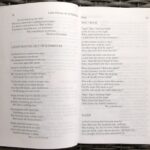The U.S. Department of Agriculture (USDA) developed the MyPlate guide as a user-friendly tool to help individuals create balanced and nutritious meals. It’s particularly helpful for parents seeking guidance on feeding their children well. This guide uses a colorful, divided plate to illustrate the recommended proportions of different food groups.
The interactive MyPlate website offers straightforward advice, emphasizing the importance of variety and balance. Key messages include:
- Choose Variety: Prioritize meals with a mix of items from all food groups.
- Fill Half Your Plate with Vegetables and Fruits: Make these the foundation of your meals.
- Make Half Your Grains Whole Grains: Opt for options like oatmeal, whole-wheat bread, and brown rice.
- Serve Low-Fat or Fat-Free Milk and Water: Limit sugary drinks.
- Avoid Oversized Portions: Be mindful of appropriate serving sizes.
Making MyPlate Work for You
MyPlate visually demonstrates that vegetables and fruits should occupy half of your plate, while grains and protein foods each comprise approximately a quarter. Dairy, in the form of milk, cheese, or yogurt, is recommended as a side.
You might wonder if all food groups must be included at every meal, or if vegetables are essential at breakfast. While aiming for balance throughout the day is important, flexibility is key. If vegetables aren’t appealing at breakfast, substitute with fruit. Incorporate both at lunch and snack times. Think of MyPlate as a guide for overall healthy eating rather than a rigid rulebook.
Consider the plate as representing an entire day’s worth of eating. Strive to make half of your child’s daily intake vegetables and fruits, and the other half grains and protein foods. Occasional treats are acceptable, but limit foods high in calories and low in nutritional value.
Leading by example is crucial. MyPlate is beneficial for both adults and children. When children observe their parents consuming healthy foods, they are more likely to adopt similar habits.
Green = Vegetables
Vegetables occupy the largest portion of the MyPlate diagram. They are rich in vitamins and minerals essential for good health, naturally low in calories, and a great source of fiber. The vegetable group includes:
- Dark Green Vegetables: Broccoli, spinach, and kale are excellent choices.
- Orange and Red Vegetables: Consider squash, carrots, and sweet potatoes.
- Beans and Peas: Kidney beans, lentils, and black-eyed peas are versatile (and also count as protein).
- Starchy Vegetables: Corn, potatoes, and plantains offer carbohydrates.
- Other Vegetables: Cauliflower and green beans are examples that don’t fit into the previous categories.
To maximize nutrition, offer a diverse range of vegetables each week, using fresh, frozen, or canned options.
Red = Fruits
Fruits are vital for a balanced diet, providing nutrients like vitamin C, potassium, and fiber. Like vegetables, fruits can be fresh, frozen, or canned.
When buying canned fruit, choose varieties packed in juice rather than syrup. Whole fruit is preferable to 100% fruit juice, as juices tend to have more sugar and calories with less fiber per serving.
Orange = Grains
The grain group encompasses any food made from wheat, oats, cornmeal, barley, or other grains. This includes bread, tortillas, cereal, rice, and pasta.
At least half of the grains consumed daily should be whole grains, such as oatmeal, brown rice, and whole-wheat bread. Whole grains provide dietary fiber that promotes fullness and can help prevent constipation. A diet rich in whole grains may also reduce the risk of heart disease and diabetes.
Refined grains, such as white bread and white rice, undergo more processing, which removes many nutrients. While most refined grains are enriched to add back some nutrients (excluding fiber), they are still less nutritious than whole grains.
Purple = Protein Foods
Protein-rich foods are essential for building and maintaining muscles, skin, blood, and other tissues. They also contain important vitamins and minerals like iron.
Good sources of protein include beef, poultry, seafood, dry beans and peas, eggs, nuts, and seeds. Soy products, like tofu and veggie burgers, are also excellent options. When selecting meats, prioritize lean or low-fat choices.
Blue = Dairy
This group includes milk and other dairy products like yogurt and cheese. Calcium-fortified soy milk and soy yogurt are also included in the dairy category. Dairy products provide calcium, protein, and vitamin D. Vitamin D aids in the absorption of calcium, which is crucial for healthy bones and teeth. Foods made from milk, such as butter, cream, and cream cheese, are not part of the dairy group because they lack significant calcium content.
Serve low-fat or nonfat milk and dairy products to children over 2 years old.
Further Resources on the MyPlate Guide
MyPlate serves as a valuable guide to healthy eating. Consult your healthcare provider if you have concerns about your child’s dietary habits.
Visit the USDA’s MyPlate website for daily checklists, recipes, tips, and interactive tools.
